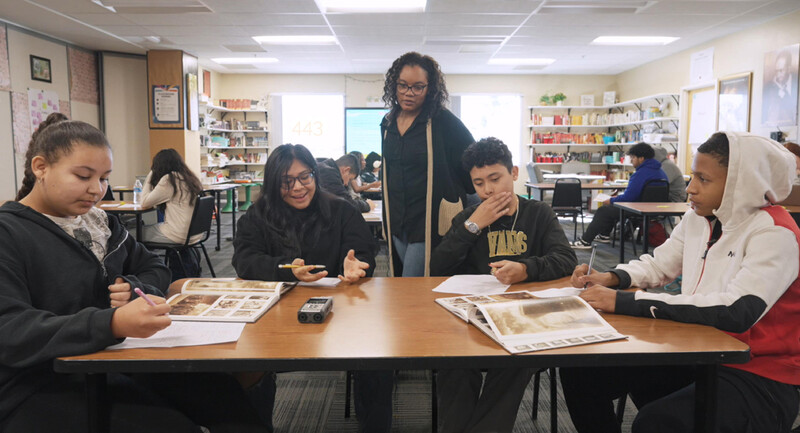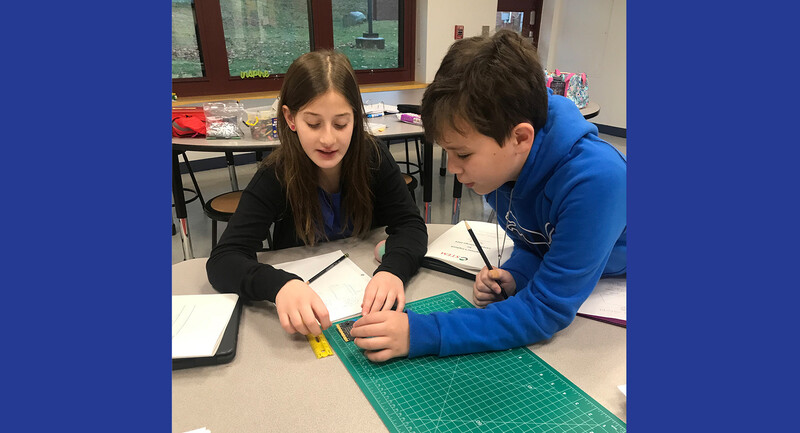Guiding Principles and Recommendation
- Provide a relaxing, literature-rich reading environment. Design warm, inviting reading centers. Rotate groups of students so that each youngster has access to the center at least once a week. Stock classroom libraries with books, magazines, newspapers, TV and movie schedules, catalogs, menus, reference materials, and so on. If funds are short, ask for donations, check garage sales and resale shops, or hold PTA-sponsored book drives or fundraisers.
- Give students a wide range of reading choices. Ask students about their interests, and stock class libraries accordingly (Trelease 1989). Use short stories and books with unmotivated students to provide more choices. Hold book discussions and invite authors to visit to generate student interest in reading.
- Provide sufficient modeling. Modeling calls for a competent reader to read aloud while less able readers listen and look at the words as they are read. Make certain that less able readers can see the words (use charts, chalkboards, or oversized books). Point to the words or phrases as they are being read; reread sections two or three times. After sufficient modeling, encourage students to read aloud in small groups before they advance to reading aloud individually (Carbo 1996).
- Challenge students. The Carbo Recorded-Book Method (see box) increases fluency, comprehension, and word recognition quickly; it challenges students with more difficult materials while providing a recording that they can review as many times as needed (Carbo 1989). This method has been particularly effective with youngsters who have difficulty learning with phonics, with older students and adults who have become "turned off " to reading, and with children who have poor language proficiency.
Recording for Maximum Reading Gains
You can incorporate the Carbo Recorded Book method into any reading program. Here's how it works:
Record very small segments of high-interest, challenging material. Use natural expression and read at a slow pace (about 85-90 words per minute). Record only two to four minutes of text on each side of the tape. (Most short stories or low-level books can be recorded on one to four tape cassettes.)
Have students look at the text while they listen to the recording. Repeat this process several times if needed for each tape side.
Next, ask students to read the selection aloud and discuss it.
The slow recordings help students synchronize the spoken words with the printed text, and the repetition of small amounts of text helps improve word retention. Special phrasing and pauses help to increase word recognition and comprehension. The person who records the passage sets the pace for the reader, much as a metronome does for a musician.
You also can record textbooks for use in media centers. Always get permission from the copyright holder before recording. For copyright guidelines, request Circular 21 from the Copyright Office, Library of Congress, Washington, DC 20559.
®Carbo Recorded Books is a registered trademark.
- Observe your students carefully and use the Reading Style Inventory (RSI) to identify strengths and needs. (The RSI is a questionnaire that describes a learner's strengths and physical needs, and identifies the appropriate reading methods and strategies.) Begin by accommodating students' reading styles with comfortable reading areas, snacks, some reduced lighting, and choices of activities. Learn a variety of methods to teach reading and apply them flexibly. If a child cannot learn with one method, adapt it or use a different method. Try multisensory teaching, and accommodate students' global and analytic needs.
- Use colored overlays to minimize visual problems. For some youngsters, letters and words reverse, swirl, or slide off the page (Irlen 1991). Experiment by placing different overlays over the text. The right color for a youngster can dramatically improve reading by reducing letter movement. Also try using colored notebook paper, colored chalk, and colored transparencies.
- Select the right reading method at the right time. If a student does poorly on a phonics test, he or she might not be developmentally ready to learn phonics. Or the child might not have the necessary strengths to learn (can't hear phonics sounds, associate sounds with letters, or blend them). Each youngster has a different inner clock and a different reading style.
- Don't label students as "slow" because they are primarily tactile and kinesthetic (T-K). While most young children appear to be tactile and kinesthetic, some students continue to prefer that style throughout their lives. These students often are placed in lower tracks simply because their learning needs have not been met. We strongly recommend that teachers create files of tactile and kinesthetic activities to use with these learners (Carbo 1996, Gilbert 1977, Martin 1996, Thomasson 1993).
- Teach the concept of reading styles to students. We recommend that teachers read their students books that accentuate differences in styles. Consider, for example, Rose and Tulip (Fels 1993) and Gregory the Terrible Eater (Sharmat 1980) for elementary students and The Bedspread(Fair 1982) for secondary students.
- Encourage students to plan strategies that capitalize on their reading styles. We use many techniques—including cooperative groups—that provide problem situations related to reading styles. Consider this example: Explain to your students that 17 of the 25 students in your classroom prefer quiet while reading and the remaining 8 prefer music. Have them think about how they would meet the needs of both groups. Do they foresee any problems? Such activities encourage students to become part of the decision-making process.
- Emphasize holistic, thematic teaching and modeling. Global learners relate to stories and situations that are exciting, fun, humorous, and personal. To do their best, they must be interested in what they read. We expose children to a wide variety of authors and books; we read short passages aloud, invite authors to visit, and use reading volunteers. Global students, in particular, often lose interest quickly when taught solely through such analytic approaches as phonics and linguistics.
- Provide many different opportunities for movement. We think of active learning on four levels. Many classrooms operate at only the first level, but all four are necessary, especially for highly tactile and kinesthetic learners. Level 1 provides a physical break separate from learning (move to get needed materials, sharpen pencils, get a drink, distribute papers). At Level 2, students may move while they work (play a tape recording, work at an overhead projector, stand at a desk, or sit on a rug). At Level 3, students work with manipulatives and games to learn concepts and information. Finally, at Level 4, youngsters engage in real-life or simulated experiences (pantomime, puppets, role playing).
- Use reading styles strategies with basal readers. Many teachers' manuals prescribe activities for auditory and analytic learners. To make adaptations for global, tactile, and kinesthetic learners, try the following: Provide a human interest story about the author or illustrator, have children pantomime or role-play the story, create vocabulary task cards, or tape record the story. Include humor in your presentation. Give students the choice of working alone, in pairs, or with small groups. Eliminate any stories or workbook pages that children dislike or find boring. When possible, allow students to choose the story they will read.
- Adapt and combine reading methods when appropriate. Remember, the learner—not the method—is important. Ask very low-level readers to dictate stories of two or three sentences. These very short stories take only a few minutes to record, and they're easy for students to remember and build on. Each day, have students add another "page" to their book and listen several times to their new, expanded story. Include all the stories in the class library for students to share.
- Begin by providing activity-based, multisensory, whole-class lessons. Consider the following model lesson that improves spelling and vocabulary while demonstrating the high motivation levels and excitement produced by activity-based learning: Provide each student with a packet of blank laminated cards and a crayon. Have students write one spelling word on each card and spread the cards out on their desks. Ask them to find a particular word, or a synonym or antonym. Students find the word, hold it up toward the teacher, and whisper the word. In a later activity, students might use the word in a sentence and spell it aloud.
- Develop learning centers that contain clear directions and assessment devices. Learning centers allow controlled movement within a classroom. We develop reading centers that contain reading materials, recorded books, book games, card readers, tape players, and listening areas. Some reading styles schools have schoolwide reading centers. Assessments may take the form of games, writing, artwork, or oral conferences. Teachers use checklists or charts to schedule students into the center and to manage materials. Student, parent, or grandparent volunteers can help develop materials for the learning centers.
- Plan for in-depth staff training in reading styles.
- Continue training and monitor staff progress for at least three years. Teachers and administrators need time to learn new strategies, share successes and failures, develop materials and management techniques, and work with parents. And they need mentors throughout the process. We have found that the change process accelerates considerably when teachers observe and analyze model lessons, develop buddy systems, are assisted by on-site facilitators, make interclass visits, and enjoy the support of administrators.
- Provide administrators with training in reading styles. The program benefits when administrators become active supporters and facilitators.
- Help parents understand reading styles. Hold evening sessions for parents. Invite parents to workshops where they can create samples of hands-on materials. The staff at R.E. Baker Elementary (a reading styles model school in Bentonville, Arkansas) started an innovative Saturday Parent University. Topics covered grew out of a parent survey. Teachers provided child care, and parents could attend three of the five 35-minute sessions. Parents learned about their children's reading styles and saw the methods and materials being used to meet the needs of different learners.







